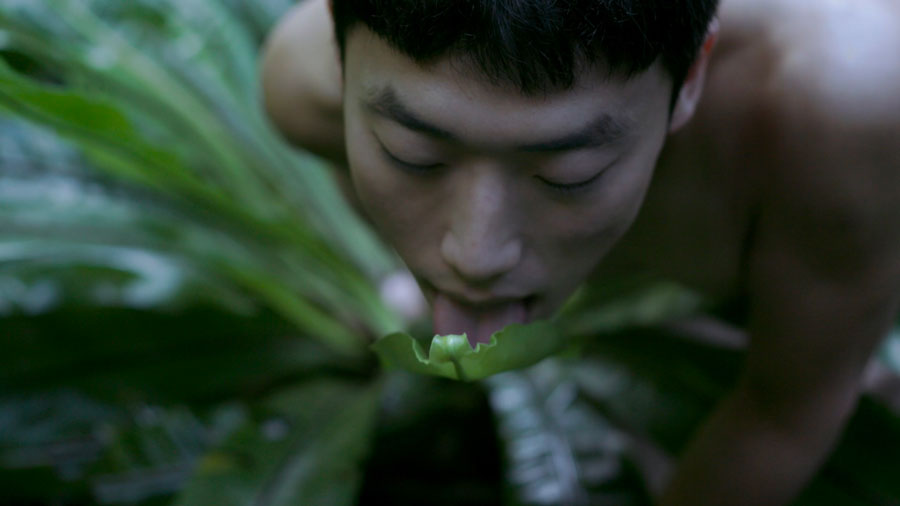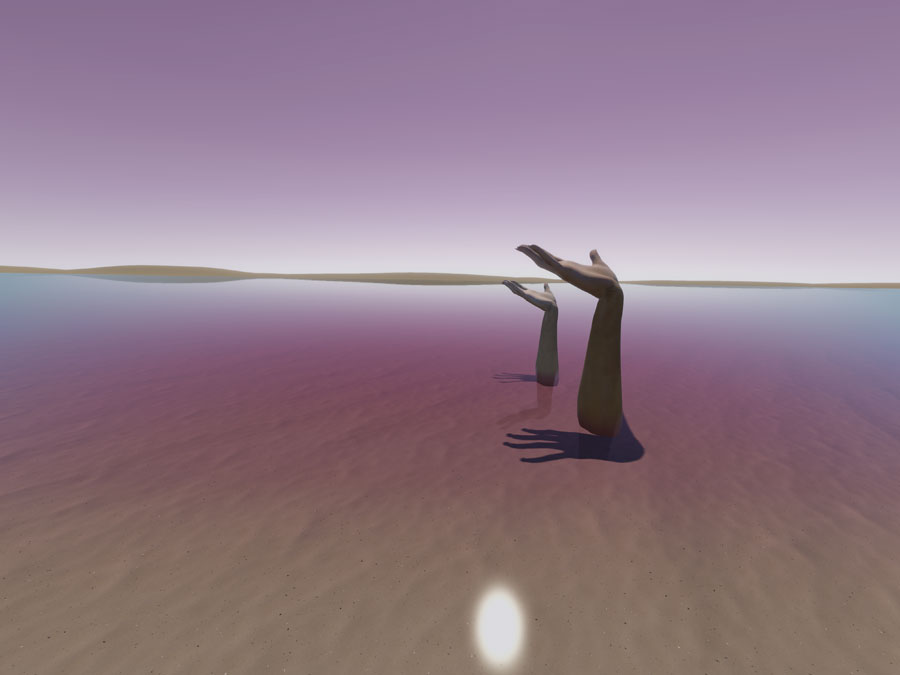Ahead of Artissima Your Guide to the Best Shows in Turin
From the errors of AI to the pleasures of VR, contributing editor Barbara Casavecchia gives the lowdown on the best shows opening this week
From the errors of AI to the pleasures of VR, contributing editor Barbara Casavecchia gives the lowdown on the best shows opening this week

Hito Steyerl
Castello di Rivoli
1 November 2018 – 30 June 2019
Newly announced as recipient of the Käthe Kollwitz Prize 2019, Hito Steyerl’s exhibition ‘The City of Broken Windows’ at the Castello di Rivoli, curated by Carolyn Christov-Bakargiev and Marianna Vecellio, fills the museum’s cavernous Manica Lunga (which once housed the picture gallery of Duke Carlo Emanuele I) with the sound of breaking glasses. This is part of a training exercise for AI, who are meant to recognize it as dangerous and activate alarms and security systems. But machines, like humans, are prone to errors: unable to classify this ear-shattering noise, they interpret it as merely the sound of ringing bells.
Vinyl texts in discontinued AI lingo run along the walls; at the extremities of the exhibition space Steyerl has positioned two new videos and a trompe-l’oeil set of windows painted by Chris Toepfer (artist, activist and founder of the Neighbourhood Foundation, which runs a scheme for neighbourhood revitalization in US inner cities by facilitating decorative board-ups on the facades of vacant properties). If the screen – like Giorgio Vasari’s perspective – was meant to be our ‘window on to the world’, then something must have gone terribly wrong.
In the project room, Cally Spooner, winner of the illy Present Future 2017 Prize, presents ‘Everything Might Spill’ (2018), where an office fountain filled with infectiously toxic chlorinated water becomes a metaphor for how, ‘free-market techno-capitalism is transforming the ontology of humankind, our emotions and interpersonal relationships, into the stagnated product of corporate algorithms and economic codes’, as the artist puts it.

Monster Chetwynd, Rachel Rose, Lynette Yiadom-Boakye, Andra Ursuta
Fondazione Sandretto Re Rebaudengo
Opening 2 November
Jointly commissioned by the Philadelphia Museum of Art and the Sandretto Re Rebaudengo Foundation, the new film Will-o-Wisp (2018; on view until 3 February 2019) by Rachel Rose takes viewers back to 16th century Elizabethan England – Somerset to be precise – where a woman named Elspeth is believed to be a witch. Shot with the rich palette and atmospheric photography of a period drama, with live actors and plenty of ‘magic’ special effects, Will-o-Wisp translates Silvia Federici’s famous feminist book Caliban and the Witch (1998) into polished high-def scenes. We see a time where the transition from feudalism to capitalism is marked by the privatization of common lands as well as by the progressive subjugation of women, expropriation of their work and severe ‘disciplining’ of their presence in the public sphere, culminating in the witch hunts.
With a different kind of mayhem, Monster (farewell, Marvin Gaye) Chetwynd presents (until 30 March 2019) ‘The Owl with the Laser Eyes’, a new project, involving monumental paintings, costumes, props, bats, live music, and a performance (2 November, 7.30pm) and two puppet shows, freely inspired by Clash of the Titans, reality shows and Italo Calvino’s 1973 fantasy novel Il castello dei destini incrociati (The Castle of Crossed Destinies), whose intertwining tales are based on the interpretation of Tarot cards.
The Foundation hosts two further exhibitions, also curated by Irene Calderoni: ‘Vanilla Isis’ by Andra Ursuta (until 30 March 2019), whose new sculptures and paintings satirize the aesthetics of extremism, and a selection of paintings by Lynette Yiadom-Boakye from the foundation’s collection (until 20 January 2019).

Petrit Halilaj, ‘Shkrepëtima’
Fondazione Merz
29 October 2018 – 3 February, 2019
Runik, the city in which Petrit Halilaj (b.1986, Kostërrc, Skenderaj-Kosovo) grew up, is a recurring presence in his often autobiographical work. For ‘RU’, his recent exhibition at the New Museum in New York, Halilaj reconstructed the collection of exceptional Neolithic artefacts excavated in the city, dispersed across different museums, institutions and nations after the 1998–99 Kosovo war, with the help of archival materials and oral history from the local community. ‘Shkrepëtima’ (Spark) brings his involvement with his hometown a step further and towards a new public direction. The project, curated by Leonardo Bigazzi, began in the summer, with the cleaning of the abandoned building of Runik’s old House of Culture, which once contained a library, theatre and cinema. The artist reopened and reactived it for a night of theatre plays and performances, involving a large crew of the local population, as well as his own family. In Turin, Halilaj presents a new video and restages the sets and props used in Runik, as well as a monumental scenography made of wood, bricks and concrete fragments taken from the cultural centre’s original façade. A new series of drawings, sketched on old documents and papers found onsite, complete the installation. The title of the exhibition pays homage to the homonymous multi-ethnic publication once issued by the association of Runik school teachers.

Zheng Bo, ‘WEED PARTY III’
PAV (Parco Arte Vivente)
4 November 2018 – 24 February 2019
Visitors to the Botanical Garden in Palermo for the recent edition of Manifesta might have been surprised to stumble across a series of videos (‘Pteridophilia’, 2016–ongoing), half hidden in a small bamboo grove, showing young naked men having sensual intercourse with wild ferns in a Taiwanese forest. With it, artist Zheng Bo (born 1974, Beijing) pushed (and queered) the love of nature to a radical level. At Parco Arte Vivente (PAV) – a six-acre open air park and experimental art centre, founded by Turinese artist Piero Gilardi in the early 2000s and located in the post-industrial area of Via Giordano Bruno – Bo presents a new chapter of his ‘Weed Party’ series, begun in 2015. The artist imagines a grassroots political party, capable of bringing together resilient humans and non-humans in defence of the planet, under the ecological banner of: ‘Earth Workers Unite’. Curated by Marco Scotini, the exhibition revolves around a new site-specific instalment of After Science Garden (2018, begun earlier this year at the University of Minnesota, Minneapolis), located in the glasshouse. Based on plants used in scientific experiments, the ‘garden’ is developed in collaboration with local scientists, activists and spontaneous botanical species. Elsewhere, don’t miss the outdoor installations by Dominique Gonzalez-Foerster and Gilles Clément.

Mike Nelson, ‘L’Atteso’
OGR
2 November 2018 – 3 February 2019
In theorizing the aesthetics of reception, in the 1970s Hans Robert Jauss measured the impact and relevance of a book in accordance to its potential to alter the ‘horizon of expectations’ of its readers. With his project L’atteso (a fairly untranslatable Italian expression, oscillating between ‘the expected’, ‘the awaited’ and ‘the suspended’), curated by Samuele Piazza, Mike Nelson tries his best to both inflate and deflate viewers’s expectations of his large-scale immersive installations, much like the fabulous I, Impostor, created for the British Pavilion at the Venice Biennale in 2011. Filled with 180 tonnes of rubble, plunged into darkness and accessed from the back of a 10-metre-high scaffolding looking like a drive-thru movie screen, the vast Binario 1 of OGR (used as a railway maintenance depot until the early 1990s) is occupied by a group of ordinary cars, whose owners have mysteriously disappeared, as if in a horror movie, or a post-apocalyptic sci-fi novel. Who were they, what happened and when (in the past or near future?); where did everybody go, and why? These are the questions that visitors will have to try and answer, pondering over the contents of each vehicle.

Francesco Vezzoli
1 November 2018 – 12 January 2019
Dara Friedman / Rayyane Tabet
30 October 2018 – 26 February 2019
Galleria Franco Noero
Dario Argento filmed seven of his cult horror films in Turin, in the process greatly contributing to the city’s shady fame. He has claimed the city is the place where his nightmares ‘feel better’, and where he conceived his scary saga of the three witches and mothers of hell – Mater Suspiriorum, Mater Tenebrarum and Mater Lacrimarum – started in 1977 with Suspiria (recently remade by Luca Guadagnino). It’s fitting, then, that Francesco Vezzoli has found inspiration in the aesthetics of Italian ’70s horror cinema for his takeover of Franco Noero’s venue in the central Piazza Carignano. The special layout conceived by artist Filippo Bisagni, with the soundtrack created by American electronic composer Wendy Carlos (who created the scores for Kubrick’s A Clockwork Orange, 1971, and The Shining, 1980), conjure plenty of suspense before unveiling the show’s protagonist, the revolving sculpture C-CUT (2018), which represents a man erupting from another male body, like an Alien chestbuster (whose animatronic head was designed by Italian special effects wizard Carlo Rambaldi).
Symmetrically, the gallery’s space at Via Mottalciata, hosts solo shows by Rayyane Tabet and Dara Friedman: Friedman presenting a new work L☿ver, based on the flute melody of Debussy’s Prelude to the Afternoon of a Faun (1894) as well as a primeval cavewoman.

Non-Profit Spaces
Not-for-profit and artist-run spaces have a longstanding tradition, in Turin and until 15 December, Almanac Inn (the Turinese twin of London-based Almanac Projects) presents ‘CARTABURRO’, a solo exhibition by Italian artist Anna Franceschini, whose new videos, sculptures, objects and scenographic elements pay homage to another Turin-specific legend: architect, designer, photographer, polymath and ski champion Carlo Mollino. A special publication conceived by the artist, designed and printed by Friends Make Books, will be released for the occasion. The itinerant curatorial project Treti Galaxie stages under the dystopic arches of ex-MOI (Via Giordano Bruno 181, until 15 November), the abandoned Olympic village in the Lingotto area, ‘HanaHana’, an interactive exhibition by Mélodie Mousset (b.1981, Abu Dhabi) to be experienced via special headsets. The artist developed this project in collaboration with Turin-based DEAR Onlus and a group of children patients of the local Regina Margherita hospital, who contributed to the creation of a new version of HanaHana Full Bloom, a surreal ‘VR sandbox’, as the artist describes it, ‘where you can grow chains of hands and construct anything you can imagine.’
The Chapel of the Holy Shroud
The chapel (1667–90) housed in Turin’s cathedral, with its amazing, M.C. Escher-like baroque cupola, designed by Guarino Guarini, finally reopened its doors after 21 years of restoration. Built in accordance to mathematic proportions based on the mystical number three (for Trinity) and the iteration of three figures (circle, triangle and star), it will bathe you in divine light and architectural delight.
A Special Performance:
3 November, 9pm – midnight
Cleo Fariselli (in collaboration with her father, the musician and composer Patrizio Fariselli) presents U., an intimate performance for five spectators only, in a spectacular location: the ex-cemetery of San Pietro in Vincoli.
Booking essential: info@collezionegiuseppeiannaccone.it
Main image: Hito Steyerl, The City of Broken Windows, 2018, film still. Courtesy: the artist and Castello di Rivoli, Turin




















